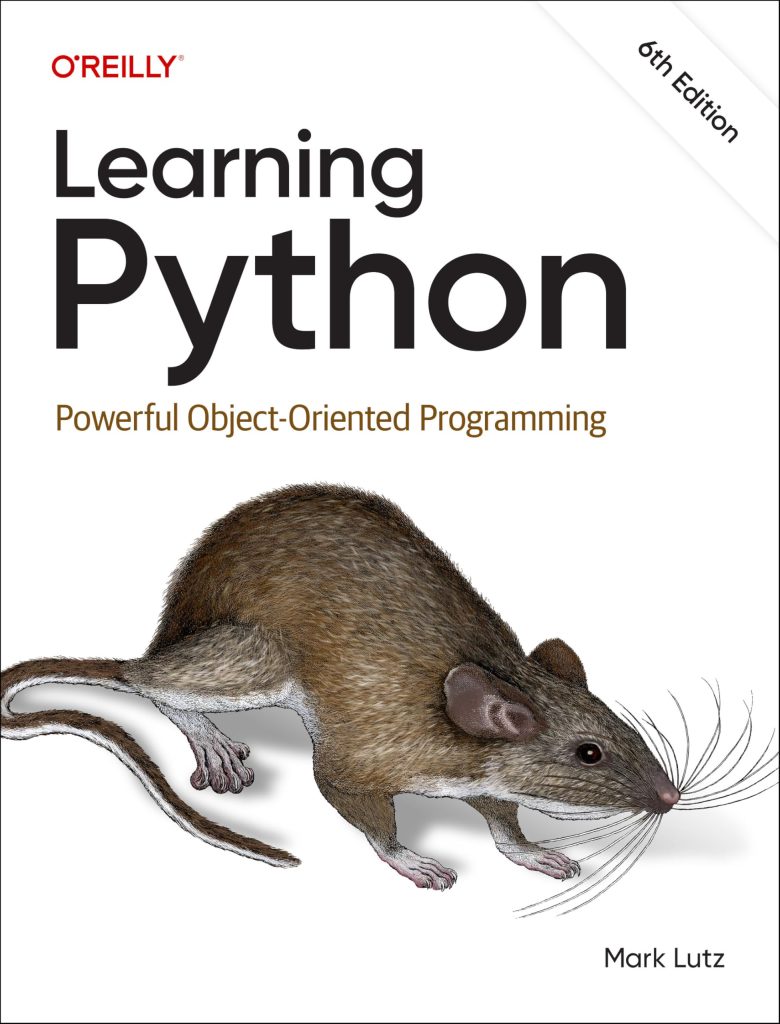
In the realm of machine learning and deep learning, loss functions play an important role in optimizing models and achieving desired outcomes. PyTorch, a widely-used open-source machine learning library, provides a comprehensive set of loss functions through the torch.nn.functional module. These loss functions are essential components in the training process, guiding the model towards minimizing the discrepancy between its predictions and the expected outputs.
The torch.nn.functional module offers a variety of loss functions suitable for different types of problems and model architectures. These functions serve as objective functions that quantify the error or divergence between the model’s predictions and the ground truth labels. By minimizing the loss function during training, the model adjusts its parameters to better approximate the underlying data distribution and improve its performance.
import torch.nn.functional as F # Example: Mean Squared Error (MSE) Loss outputs = model(inputs) # Model predictions labels = ... # Ground truth labels loss = F.mse_loss(outputs, labels)
The choice of loss function depends on the nature of the problem and the characteristics of the data. For instance, in regression tasks, where the goal is to predict continuous values, mean squared error (MSE) or mean absolute error (MAE) loss functions are commonly used. Conversely, for classification problems, cross-entropy loss is a popular choice, as it quantifies the performance of a model in assigning class probabilities.
Proper selection and understanding of loss functions are crucial for effective model training and achieving accurate results. PyTorch’s torch.nn.functional module provides a wide range of loss functions, enabling researchers and practitioners to choose the most appropriate one for their specific tasks and requirements.
Commonly Used Loss Functions in torch.nn.functional
PyTorch’s torch.nn.functional module offers a comprehensive set of commonly used loss functions, catering to various machine learning tasks. Let’s explore some of the most widely employed loss functions and their applications.
Mean Squared Error (MSE) Loss: The MSE loss is a popular choice for regression problems, where the goal is to predict continuous values. It calculates the squared difference between the predicted and true values, and then averages it across the dataset. MSE is an excellent choice when small errors are more tolerable than large ones.
import torch.nn.functional as F outputs = model(inputs) # Model predictions labels = ... # Ground truth labels loss = F.mse_loss(outputs, labels)
Binary Cross-Entropy Loss: This loss function is commonly used in binary classification problems, where the output is a probability value between 0 and 1. It measures the performance of a model in assigning class probabilities by penalizing the model for incorrect predictions.
outputs = model(inputs) # Model predictions (logits) labels = ... # Ground truth labels (0 or 1) loss = F.binary_cross_entropy(outputs, labels.float())
Cross-Entropy Loss: For multi-class classification problems, where the output is a probability distribution over multiple classes, the cross-entropy loss is a popular choice. It computes the negative log-likelihood of the true class, encouraging the model to assign higher probabilities to the correct classes.
outputs = model(inputs) # Model predictions (logits) labels = ... # Ground truth labels (class indices) loss = F.cross_entropy(outputs, labels)
Negative Log-Likelihood Loss: This loss function is commonly used in generative models, such as autoencoders and variational autoencoders (VAEs). It measures the negative log-likelihood of the data under the model’s distribution, encouraging the model to discover the underlying data distribution accurately.
outputs = model(inputs) # Model predictions (parameters of the distribution) data = ... # Input data loss = F.nll_loss(outputs, data)
These are just a few examples of the commonly used loss functions in PyTorch’s torch.nn.functional module. Depending on the specific task and data characteristics, researchers and practitioners can choose the most appropriate loss function to optimize their models effectively.
Custom Loss Functions in PyTorch
PyTorch provides a flexible framework for defining custom loss functions tailored to specific requirements. While the torch.nn.functional module offers a wide range of built-in loss functions, there may be scenarios where a custom loss function is necessary to address unique challenges or incorporate domain-specific knowledge.
Creating a custom loss function in PyTorch involves defining a Python function or a subclass of the torch.nn.Module class. This allows for greater flexibility and control over the loss computation process. Here’s an example of how to define a custom loss function as a Python function:
import torch
def custom_loss(outputs, labels):
# Compute the loss based on outputs and labels
# You can incorporate any desired logic or constraints here
loss = torch.sum((outputs - labels) ** 2)
return loss
In this example, the custom_loss function takes the model outputs and ground truth labels as input, and computes a simple mean squared error loss. You can modify the computation logic to suit your specific requirements, such as incorporating weights, penalties, or domain-specific constraints.
Alternatively, you can define a custom loss function as a subclass of torch.nn.Module, which allows for greater flexibility and the ability to maintain state during training. Here’s an example:
import torch.nn as nn
class CustomLoss(nn.Module):
def __init__(self, param1, param2):
super(CustomLoss, self).__init__()
self.param1 = param1
self.param2 = param2
def forward(self, outputs, labels):
# Compute the loss based on outputs and labels
# You can use self.param1 and self.param2 in the computation
loss = torch.sum((outputs - labels) ** 2 + self.param1 * outputs + self.param2 * labels)
return loss
In this example, the CustomLoss class inherits from nn.Module and defines an initialization method (__init__) to accept custom parameters (param1 and param2). The forward method computes the loss based on the model outputs, ground truth labels, and the custom parameters.
Once you have defined your custom loss function, you can use it during model training by passing it to the optimizer, similar to how you would use a built-in loss function:
import torch.optim as optim
model = YourModel()
criterion = CustomLoss(param1=0.1, param2=0.2) # Instantiate your custom loss
optimizer = optim.SGD(model.parameters(), lr=0.01)
for inputs, labels in data_loader:
outputs = model(inputs)
loss = criterion(outputs, labels)
optimizer.zero_grad()
loss.backward()
optimizer.step()
By defining custom loss functions in PyTorch, you can tailor the training process to specific requirements, incorporate domain knowledge, and potentially improve model performance for specialized tasks.
Handling Class Imbalance with Loss Functions
In many real-world machine learning problems, the distribution of classes in the dataset can be highly imbalanced, with some classes having significantly more instances than others. This class imbalance can pose challenges for standard loss functions, as they treat all classes equally, potentially leading to biased models that perform poorly on minority classes.
PyTorch provides several techniques to handle class imbalance through loss functions. One approach is to assign class weights to the loss function, giving more importance to minority classes during training. This can be achieved using the `torch.nn.functional.cross_entropy` function with the `weight` parameter:
import torch.nn.functional as F # Calculate class weights num_samples = [10000, 2000] # Number of samples for each class total_samples = sum(num_samples) class_weights = [total_samples / (num_samples[i] * len(num_samples)) for i in range(len(num_samples))] class_weights = torch.tensor(class_weights, dtype=torch.float) # Use class weights in the cross-entropy loss outputs = model(inputs) labels = ... # Ground truth labels loss = F.cross_entropy(outputs, labels, weight=class_weights)
Another approach is to use loss functions specifically designed for imbalanced datasets, such as the Focal Loss or the Weighted Cross-Entropy Loss. These loss functions dynamically adjust the contribution of each sample to the overall loss based on the class imbalance and the model’s confidence.
For example, the Focal Loss can be implemented as follows:
import torch.nn.functional as F
def focal_loss(outputs, labels, alpha=0.25, gamma=2.0):
"""
Focal Loss: https://arxiv.org/abs/1708.02002
Args:
outputs: Model outputs (logits)
labels: Ground truth labels
alpha: Weighting factor for balancing focal loss
gamma: Focusing parameter for modulating factor (1 - p_t)
"""
bce_loss = F.binary_cross_entropy_with_logits(outputs, labels, reduction='none')
pt = torch.exp(-bce_loss)
focal_loss = alpha * (1 - pt) ** gamma * bce_loss
return focal_loss.mean()
The Focal Loss applies a modulating factor to the standard cross-entropy loss, focusing more on hard-to-classify examples and down-weighting easy examples. The `alpha` and `gamma` parameters control the weighting and focusing behavior, respectively.
Another useful technique for handling class imbalance is oversampling or undersampling the dataset during training. PyTorch provides utilities like `torch.utils.data.WeightedRandomSampler` to oversample minority classes or undersample majority classes, effectively rebalancing the dataset during training.
By using these techniques and carefully selecting appropriate loss functions, PyTorch enables researchers and practitioners to mitigate the effects of class imbalance and improve model performance on minority classes, leading to more robust and fair models.
Evaluating Loss Functions for Model Performance
Evaluating the performance of loss functions is important in understanding the effectiveness of a trained model and guiding the selection of appropriate loss functions for future tasks. PyTorch provides various metrics and tools to assess the quality of loss functions during and after the training process.
Monitoring Loss Curves
One of the most common techniques for evaluating loss functions is to monitor the loss curves during training. PyTorch allows you to track the loss values at each iteration or epoch, providing valuable insights into the learning process. By visualizing the loss curves, you can identify potential issues, such as overfitting, underfitting, or convergence problems, and make informed decisions about adjusting hyperparameters or modifying the loss function.
import matplotlib.pyplot as plt
# Training loop
train_losses = []
for epoch in range(num_epochs):
for inputs, labels in train_loader:
# Forward pass and loss computation
outputs = model(inputs)
loss = loss_function(outputs, labels)
# Backward pass and optimization
optimizer.zero_grad()
loss.backward()
optimizer.step()
# Store loss value
train_losses.append(loss.item())
# Plot the loss curve
plt.plot(train_losses)
plt.xlabel('Iteration')
plt.ylabel('Loss')
plt.title('Training Loss Curve')
plt.show()
Evaluating on Validation and Test Sets
In addition to monitoring the training loss, it is essential to evaluate the performance of the loss function on separate validation and test sets. This provides an unbiased assessment of the model’s generalization capabilities and helps identify potential overfitting or underfitting issues. PyTorch allows you to compute the loss on validation and test sets using the same loss function used during training.
val_loss = 0
for inputs, labels in val_loader:
outputs = model(inputs)
loss = loss_function(outputs, labels)
val_loss += loss.item()
val_loss /= len(val_loader)
print(f'Validation Loss: {val_loss}')
Analyzing Loss Distributions
Another useful technique for evaluating loss functions is to analyze the distribution of loss values across different samples or classes. This can help identify potential biases or inconsistencies in the loss function, such as disproportionately high or low losses for certain data points or classes. PyTorch provides tools for computing and visualizing loss distributions, so that you can identify and address any issues.
import seaborn as sns
losses = []
for inputs, labels in test_loader:
outputs = model(inputs)
loss = loss_function(outputs, labels)
losses.extend(loss.detach().cpu().numpy())
sns.distplot(losses, bins=20, kde=True)
plt.xlabel('Loss Value')
plt.ylabel('Density')
plt.title('Distribution of Loss Values')
plt.show()
By evaluating loss functions through monitoring loss curves, assessing performance on validation and test sets, and analyzing loss distributions, PyTorch empowers researchers and practitioners to gain valuable insights into the effectiveness of their models and make informed decisions about loss function selection and optimization strategies.






